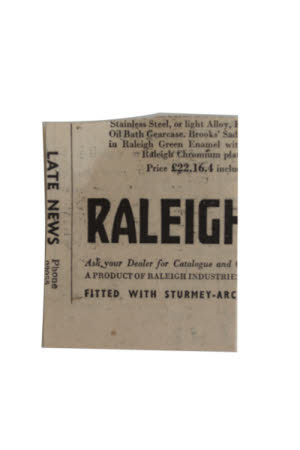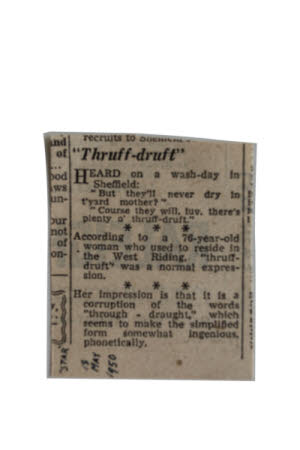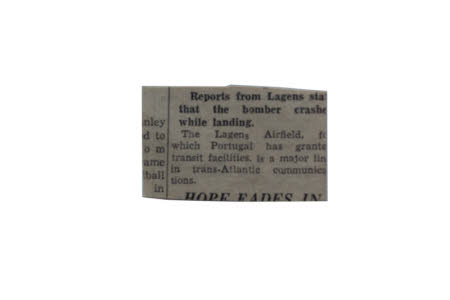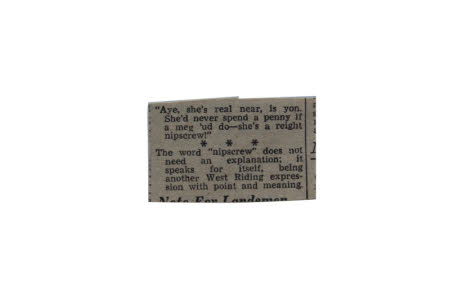The Star
Category
Ephemera
Date
1950
Materials
Paper
Order this imageCollection
Mr Straw's House, Nottinghamshire
NT 3131307.2
Summary
Two newspaper cuttings kept in the book 'The book of the seasons; . or, the calendar of nature' by William Howitt (record 3131307). Small almost square newspaper cutting, dated by William Jnr. 'STAR 15 MAY 1950' in black ink. ' "Thruff-druft" Heard on a wash-day in Sheffield: "But they'll never dry in t'yard mother?" "Course they will luv, there's plenty o' thruff-druft" * * * According to a 76-year-old woman who used to reside in the West Riding. "trhuff- druft", was a normal expression. * * * Her impression is that it is a corruption of the words "through - draught," which seems to make the simplified form somewhat ingenious, phonetically.'. Small oblong newspaper cutting. ' "Aye, she's real near, is yon. She'd never spend a penny if a meg 'ud do-she's a reight nipscrew!" * * * The word "nipscrew" does not need an explanation; it speaks for itself, being another West Riding expres- sion with point and meaning.'. Howitt was born at Heanor, Derbyshire. His parents were Quakers, and he was educated at the Friends public school at Ackworth, Yorkshire. His younger brothers were Richard and Godrey whom he helped tutor. In 1814 he published a poem on the Influence of Nature and Poetry on National Spirit. He married, in 1821, Mary Botham, who like himself was a Quaker and a poet. William and Mary Howitt collaborated throughout a long literary career, the first of their joint productions being The Forest Minstrels and other Poems (1821). In 1831, William Howitt produced a work resulting naturally from his habits of observation and his genuine love of nature. It was a history of the changes in the face of the outside world in the different months of the year, and was entitled The Book of the Seasons, or the Calendar of Nature (1831). His Popular History of Priestcraft (1833) won him the favour of active Liberals and the office of alderman in Nottingham, where the Howitts had made their home.



